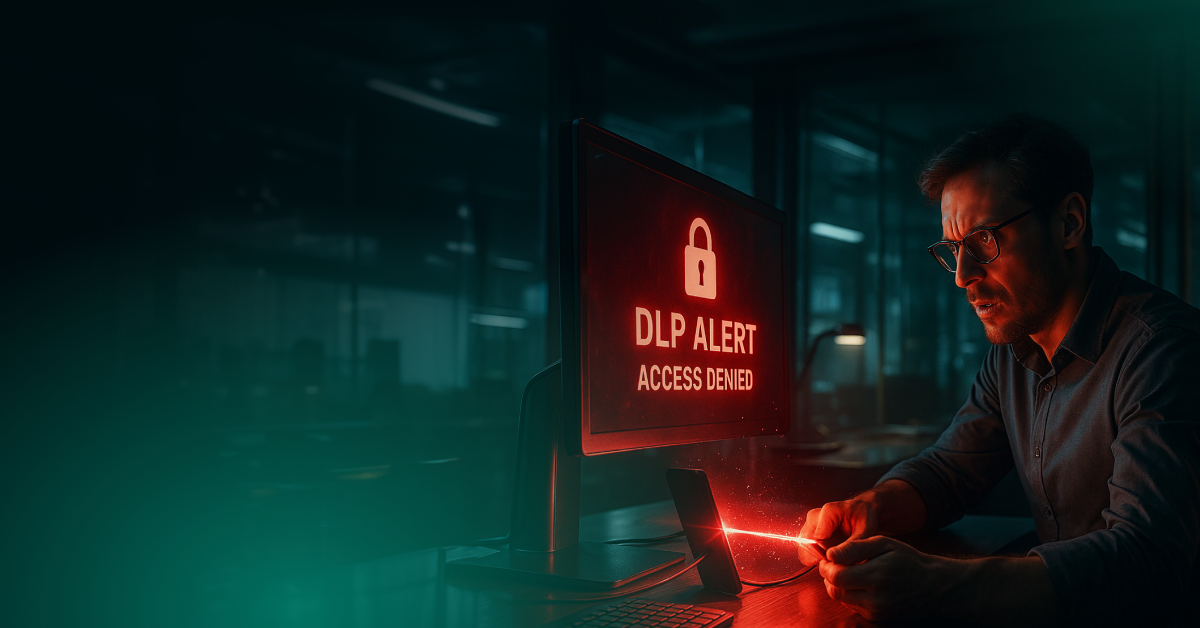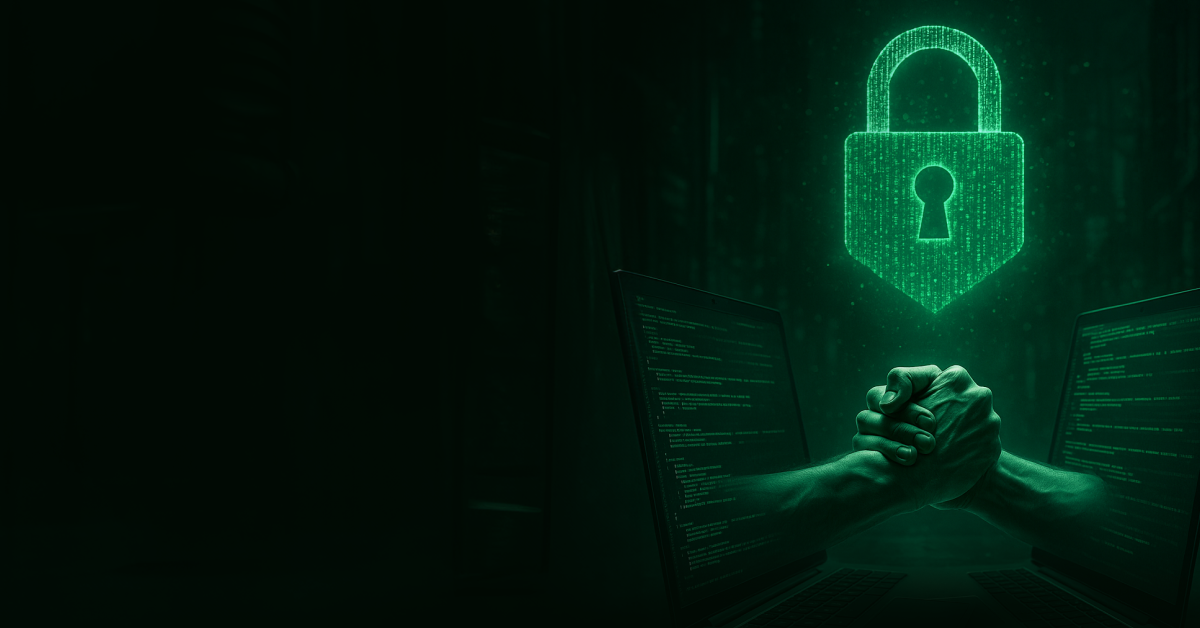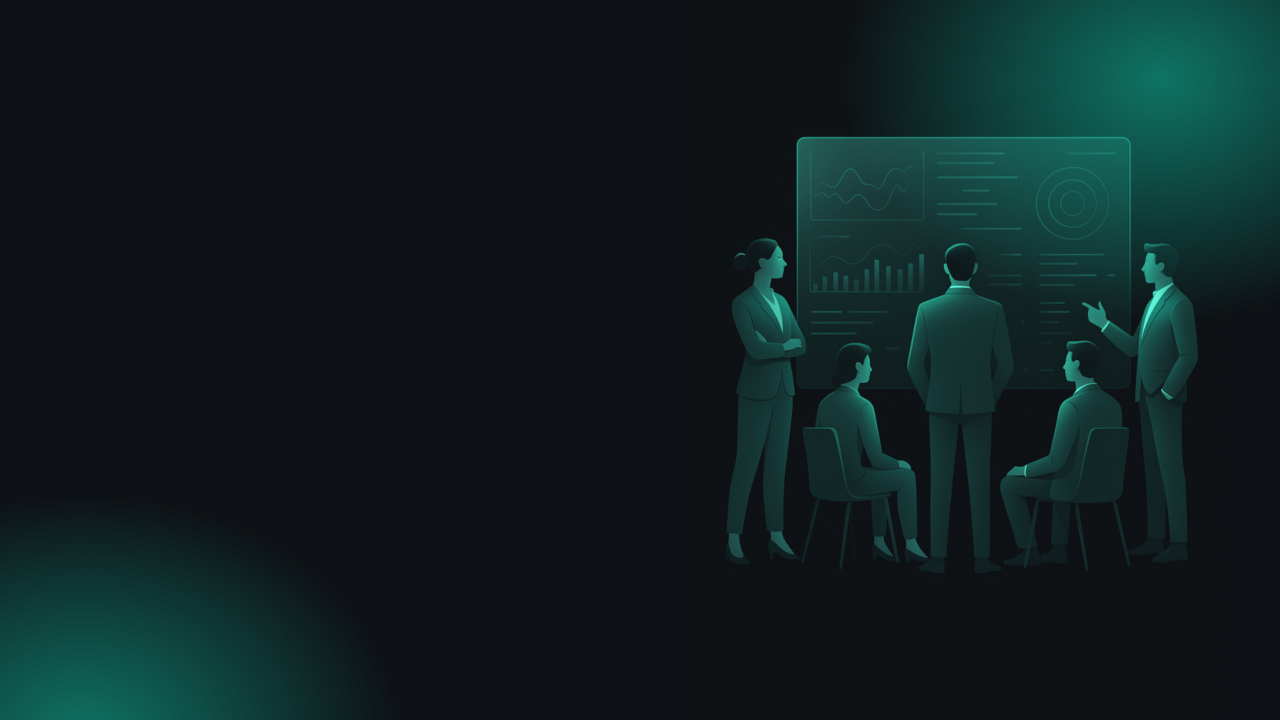Data security incidents can affect anyone, from a small startup to an international giant. In 2025, data leaks from various sources (government registries, banking databases, and financial institutions) will amount to about 20 million records.
The bad news is that most such incidents don’t start with large-scale hacker attacks but with human error or carelessness. Just one accidentally downloaded file or sent email can take confidential information outside the company.
Traditional cybersecurity tools, such as antivirus software and firewalls, primarily focus on external threats. But they are powerless when the leak comes from the inside — through a user with legitimate access to the data. That’s why businesses need another layer of protection — Data Loss Prevention (DLP).
Want to see how the technology works in action?
Eugene Borodai, a BAKOTECH engineer, briefly explained what DLP is and how the solution can benefit your business.
Find out what DLP is, what benefits it offers your company, and how to choose the right solution below.
What is a DLP system?
This is a technology that helps companies prevent the loss or unauthorized transfer of confidential data. It analyzes who is transmitting information, how, and where, and blocks any actions that could lead to a leak, whether accidental or intentional.
Systems can detect sensitive data (financial statements, personal data, commercial information) regardless of where it is stored — in files, emails, or cloud services. The main idea is to know what exactly is important information, control who has access to it, and prevent it from leaking out.
There are several types of this technology:
- Endpoint DLP: controls user actions on workstations: copying files to a flash drive, printing, sending emails, etc.
- Network DLP: monitors data movement across the corporate network, email, and web traffic, detecting attempts to transfer confidential files externally
- Cloud DLP: protects information stored or processed in cloud applications (e.g., Microsoft 365, Google Workspace), helping to avoid leaks through online services
Many modern solutions typically combine all three approaches, providing unified control over data movement across physical, network, and cloud environments.
How does DLP work?
Basically, we are dealing with a smart filter that sees how and where data is moving — on the network, in the cloud, or on an employee’s work computer — and reacts if something looks suspicious.
The system constantly monitors the movement of information. It analyzes files, emails, attachments, user actions, and even copied text fragments. If it recognizes that a file contains confidential information — for example, financial reports, personal data, or business plans — it can prohibit its sending, copying to external media, or uploading to unauthorized services.
So, if you want to know how to prevent data leakage via USB or email, here is your answer.
But before the system can start protecting you, you need to clearly define what data is critical to your company. Information is classified via three main approaches:
- Content recognition
Analysis of file content and search for specific patterns, keywords, or numbers — for example, card numbers, TINs, etc. If a match is found, the file is automatically marked as “confidential,” and further actions with it may be restricted.
- Contextual recognition
It’s not the content that matters, but the circumstances — who created the document, when, where it came from, and how it’s being used. For example, if a report is generated from an accounting system, the solution immediately recognizes that it may contain sensitive information without even opening it.
- User classification
The author of a document knows its value best. Therefore, modern DLP systems allow employees to set their levels of confidentiality: “official,” “secret,” and “top secret.” The solution then uses these labels to apply the correct security policies. And while this doesn’t replace automatic analysis, its accuracy is significantly improved.
A separate component of the system is the Discovery module, which conducts data audits in the organization. It searches for sensitive information on workstations, file storage, databases, and cloud services. Integration with artificial intelligence allows you to recognize confidentiality even where it is difficult to describe formally.
For example, a file named “Purchase of 200 tons of aluminum.docx” may be automatically categorized as “secret” even if there are no obvious keywords within it. However, the AI recognizes that this is commercial information that should not be left unattended.
Why does one need endpoint protection?
Information is the main asset for business. And that is why controlling its movement becomes a matter not only of security but also of competitiveness.
So, what does implementing a data protection and classification solution do for a business?
Reducing the risk of data leakage
The technology blocks attempts to send files to personal email, upload them to a messenger, or copy them to a flash drive.
Examples:
- If an employee tries to send a work document to Gmail or ProtonMail, the system will recognize this as an unauthorized action and prohibit the transfer.
- In case of sending via Telegram, Viber, WhatsApp, or even Microsoft Teams, the solution can distinguish work communication from risky one and does not block the business process. At the same time, it does not allow confidential files to be taken outside the chat of responsible individuals. In other words, you can send a report to a colleague who is related to it, but not to a colleague-friend from a neighboring department.
- Even when recording to a USB drive or iPhone, the system can either encrypt the data (for example, with the AES256 algorithm) or prohibit copying.
Transparency of employee actions
Want to see how your company handles data? It’s easy to organize.
The system tracks all user actions — copying, sending, creating archives, and working with the clipboard. If an incident occurs, the administrator can see what exactly happened, when, and through which channel, as well as confirm the fact of a data leak with screenshots or action logs.
Compliance with standards and audits
Endpoint DLP helps companies comply with GDPR, ISO 27001, NIST, local data protection laws, and corporate security policies.
The system creates an audit evidence base: it shows how the company classifies, stores, and protects information. It can also automatically generate reports on incidents or detected violations.
Analytics and identification of hidden risks
The Discovery module we mentioned above and the built-in artificial intelligence allow the system to find sensitive information in the most unlikely places — for example, in old archives or unstructured documents. The solution “learns” from user behavior and identifies potential risks before they escalate into incidents.
Business control without compromising work
Unlike rigid bans, modern leak protection works flexibly. It allows employees to complete their tasks while providing control over what leaves the corporate perimeter. This way, the company can maintain a balance between security and efficiency.
How to choose a Data Loss Prevention solution?
There are dozens of systems on the market, from basic to high-end enterprise platforms. But obviously, not all of them will be a good fit for your business.
If you need investments in technology to bring real benefits, it is important to pay attention not only to technical characteristics but also to the solution’s ability to adapt to the specifics of the company.
What are the key selection criteria?
Flexibility of security policies
A good system should allow you to customize policies for specific processes, user roles, and risk levels. For example, marketing can use public data without restrictions, while finance can only operate in a secure environment.
Integrations with corporate infrastructure
The solution must understand the company’s ecosystem: integrate with email services, identity management systems (Active Directory, Azure AD), SIEM platforms, cloud storage, and corporate applications. The deeper the integration, the more accurately the system sees the real picture of data flow and the easier it is to provide end-to-end control without duplicating tools.
Scalability
If a company expands its staff, moves to the cloud, or opens new branches, the system should scale easily without losing performance. Support for hybrid scenarios (on-prem + cloud), remote users, and different operating systems is a must.
Analytics and reporting
A good modern solution provides detailed reports: what data is moving, what incidents occur most often, and which users need additional training.
High-quality reporting also means readiness for audits, certifications, and compliance with standards (GDPR, ISO 27001, NIST).
Support and development
Choosing a technology is not a one-time purchase but a long-term strategy. Therefore, it is worth considering the quality of technical support, the frequency of updates, and the presence of a partner community. Companies that pick an active vendor receive more than mere product: an evolutionary tool that develops along with them.
What could be the solution?
The modern approach to data protection is not limited to individual tools. It is now based on a platform architecture where all security components interact with each other.
One of the recognized leaders of this approach is Fortra Digital Guardian. The solution has been ranked in Gartner and Forrester analyst reports for many years.
Fortra’s Data Protection Suite is a comprehensive ecosystem that integrates different levels of data control into a single security logic. DLP acts as the central element of the platform here, but its strength lies in its integration with other modules.
Its main components are:
- Fortra Classifier: a module that classifies and categorizes data. It helps determine which data is sensitive and assigns it a confidentiality level so the system can apply the appropriate protection policies in the future.
- Fortra Endpoint DLP (Host DLP): data protection at the end device level (Windows, macOS, Linux). Controls copying, forwarding, writing to media, and other user actions without affecting their performance.
- Fortra Network DLP: a network sensor that analyzes traffic and prevents the transmission of confidential information via email, web, or other communication channels.
- Fortra Cloud DLP (CASB): Cloud Access Security Broker, which implements security policies in cloud services (Microsoft 365, Google Workspace, Salesforce, etc.). Allows you to maintain control over data even outside the corporate infrastructure.
Fortra’s approach is based on the idea of Data Flow Visibility — complete transparency of data movement within the company. Thus, you can understand exactly how information is used in business processes and, therefore, increase the overall level of security and efficiency.
Conclusion
Endpoint Data Leak Prevention is about smart trust. The solution gives a company the confidence that even in a complex digital ecosystem, data remains protected. It turns the chaos of information flows into a managed security system. Every file has its place, and every incident has an explanation.
Technology helps you comply with standards, prepare for audits, and, most importantly, rest assured that your company’s most valuable asset is protected.
If you are considering implementing DLP or want to assess the level of security of your data, contact us for a consultation at [email protected]
 Austria
Austria  Azerbaijan
Azerbaijan  Bosnia and Herzegovina
Bosnia and Herzegovina  Bulgaria
Bulgaria  Croatia
Croatia  Czech Republic
Czech Republic  Denmark
Denmark  Estonia
Estonia  Finland
Finland  Georgia
Georgia  Germany
Germany  Hungary
Hungary  Kazakhstan
Kazakhstan  Kyrgyzstan
Kyrgyzstan  Latvia
Latvia  Lithuania
Lithuania  Moldova
Moldova  Montenegro
Montenegro  North Macedonia
North Macedonia  Norway
Norway  Poland
Poland  Romania
Romania  Serbia
Serbia  Slovakia
Slovakia  Slovenia
Slovenia  Sweden
Sweden  Switzerland
Switzerland  Tajikistan
Tajikistan  Turkmenistan
Turkmenistan  Ukraine
Ukraine  Uzbekistan
Uzbekistan 



